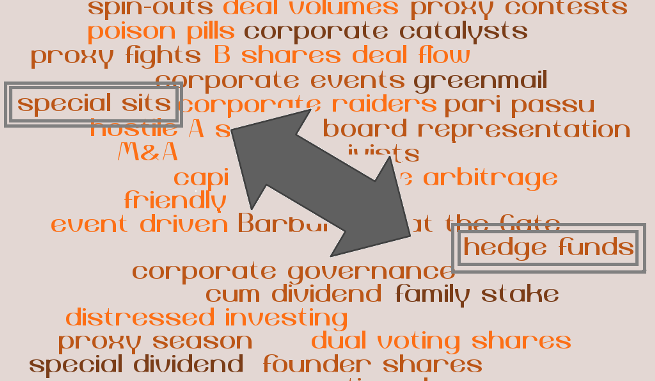The global economy is slowing down, not least from the threat of coronavirus, and with it comes the rising likelihood of distressed M&A transactions. To the economic slowdown add broad structural changes in several industries and distressed M&A deals are expected to rise in 2020. Under higher pressure and an accelerated timeframe, how can dealmakers make the best out of a challenging situation? To shed some light on the situation Imprima* brought together six experts from the fields of law, consultancy and academia to share their insights into the drivers, opportunities and pitfalls of distressed dealmaking. The following is an extract from “Making the best out of distressed M&A“, published by and copyright to Imprima,
The experts gathered were: Rüdiger Wolf Managing Director, Boston Consulting Group; Rhys Evans Senior Associate, Freshfields Bruckhaus Deringer; Vance Chapman Partner, Akin Gump; Meziane Lasfer Professor of Finance, Cass Business School; Ben Hughes Director, Deloitte; and Gary McKeown CEO, Imprima.
Mergermarket: What regions and sectors do you think are most vulnerable to economic headwinds?
Vance Chapman, Akin Gump: In Europe, the manufacturing sector looks vulnerable. On the trade war side, I think Trump’s looking to get something in place in time for the November 2020 election. Something will be sorted out. I’m more worried about the ability of China to cope with its domestic debt, though this is a recurring annual theme. Looking at the UK, the new Brexit cliff edge is set for the end of 2020. Both sides are supposed to make a decision by the middle of the year about concluding a trade deal within that timeframe. It will be interesting to see this play out.
Rüdiger Wolf, BCG: The trend towards distressed asset M&A has picked up in the last year in Europe and especially in Germany. We expect this to continue. We don’t see a major recession at the moment, but there are headwinds for certain sectors such as retail, automotive and machinery.
Rhys Evans, Freshfields: Distressed M&A is going to be a trend for the coming years. Tech companies will continue to have a disruptive influence in different sectors. Retail is the clear outlier for that. Another behaviour we’re seeing is companies pivoting towards their core activities and disposing of non-core business. That’s particularly acute where they are underperforming.
Mergermarket: What factors come into play creating distressed businesses?
Meziane Lasfer, Cass Business School: Distress takes a number of forms. Some of these can be managed, others cannot. Business risk is the first factor: the target is distressed because its product is obsolete, the competition too great or management too weak. It is difficult to adopt a recovery strategy in those situations and the likelihood of success is low, unless if a stronger new management is brought in and is able to revive it. Financial risk – debt – is the second factor. If a target is debt-laden, but otherwise sound, the likelihood of success is high, provided the buyer injects cash. Agency conflict is the third factor. In such cases, the managers are using the company’s cash for their own high compensation or luxury benefits, like private jets, rewarding themselves instead of the shareholders. In those cases, the likelihood of a successful restructuring is high. Fraud is the fourth distress factor. There are clear dangers in buying a company tainted by fraud. However, acquisition of individual assets is likely to be successful. The fifth and final factor is financial distress driven by macroeconomic risk. This typically applies where a company’s fortunes hinge on commodity prices – mining companies are an example. The likelihood of success is low because there are some macroeconomic risks that no bidder can manage.
Mergermarket: What sectors do you expect will be most active for distressed M&A over the coming 12 months?
Rüdiger Wolf, BCG: We see a lot of distressed situations in retail. People are still consuming, but retailers haven’t adapted to the rise of digital channels. The automotive industry also needs to adapt. This is less about technology and more about lower demand from China and mainland Europe. This applies to OEMs in Germany and Europe. It applies even more to automotive suppliers. The machinery industry is also being affected: growth has slowed, the impact of Brexit in Europe is unclear and trade conflicts are on the rise. On top of this, lenders are becoming more hesitant about supporting turnarounds. This can act as a trigger for M&A.
Rhys Evans, Freshfields: The retail sector will see continuing challenges. Oil and gas might be another: asset prices are relatively depressed. Oil prices have been low for a few years, and if this continues, business models will become unsustainable. Automotive faces questions about where manufacturing is going to take place in the future – the UK is acutely aware of this and is potentially susceptible.
Mergermarket: Do you expect a growth in specialist funds focused in distressed situations? Or do you expect trade buyers to step up more?

Ben Hughes, Deloitte: It’s a great time for strategic buyers with an appetite for risk and an eye on acquiring a struggling competitor, although some corporates are more willing to operate in this space than others. I think we will continue to see the turnaround private equity houses and special situations investors being the primary financial investors in this space, as distressed M&A requires specialist skills and experience.
Rüdiger Wolf, BCG: I would expect to see more strategic buyers. Businesses are preparing themselves for the future, buying is less expensive in distressed situations and there are opportunities to change the competitive situation. Private equity will take its share, but it will be different for certain sectors. We don’t see much private equity in the automotive industry, in machinery or the industrial goods sectors. I think we will see an increase in the number of funds specialising in distressed situations. They are better prepared and usually better understand post-acquisition turnarounds.
Vance Chapman, Akin Gump: Funds are typically more successful than corporates in distressed situations because they can move more quickly. Specialist funds follow distressed situations and are usually ready to transact at the drop of a hat. The same can be said of the more general funds where you’ve got individual portfolio managers tracking specific opportunities. Strategics are generally slower – although you now see more strategic teams ready to transact at the required pace than historically. I don’t know whether we’ll see a huge growth in specialist distressed fund formation this year. There’s been a fair amount of that over the last 18 to 24 months. The ones I’ve been seeing most recently have tended to be on the generalist side.
Rhys Evans, Freshfields: I don’t think you should discount the role of corporates. We are certainly having more questions brought to us 4 Making the best out of distressed M&A 5 Making the best out of distressed M&A as legal advisors from corporates looking at these sorts of situations – particularly corporates that have an opportunistic perspective on taking advantage where someone else is having difficulties.
Mergermarket: How can you arrive at a fair valuation under the pressure of insolvency?

Vance Chapman, Akin Gump: Distressed valuation can be an art as much as a science. If your target is asset-heavy, it’s straightforward. Otherwise, you’ll need certainty that existing value is transferable. Sellers need a strong story. Is there an accretion in value because an existing portfolio holding is combined with those assets? Is there a clear path to an exit? Are the revenue streams underpinning cash flow forecasts rock solid? Without certainty, you can expect severe pricing discounts.
Rüdiger Wolf, BCG: There are at least two things to have in mind to maximise value. The first is undisclosed preparation – it doesn’t help if the market thinks you need to sell. The second is a well-prepared process. You need everything ready upfront, including the data room documentation. If it’s a carve-out, you need a proper legal and operational concept.
Meziane Lasfer, Cass Business School: On the buy side, you need to be careful if undervaluation of the target is the main reason for a takeover. Is the target undervalued because of economic risk? An economically distressed target – for example, one whose products are no longer selling well – will be difficult to turn around. On the other hand, if the target is undervalued because of financial risk – debt – the problem can be overcome. It boils down to analysing why the target is underperforming.
Mergermarket: In what way is due diligence more difficult in distressed situations?
Meziane Lasfer, Cass Business School: It depends if you are acquiring the whole company or just one asset. Due diligence is easier with a single asset. Problems arise when you have a big company with a large and scattered asset base. Bidders need to discount the value of those assets to reflect the risk. That means applying the highest discount rate. In other words, bidders need to take a due diligence risk premium.
Rüdiger Wolf, BCG: Start by getting an impression of the seller. They should be preparing a proper vendor due diligence and a proper carve-out concept by themselves. Without this, the bidder will be forced to look for discounts. Bidders need to be sure that the due diligence team has the competencies required, including market knowledge, understanding the target’s competitive position and identifying the operational levers to improve profitability – especially if growth is not going to be the main driver of profitability. Then the financial situation: how can that be structured? What are the levers to optimise performance?
Mergermarket: Warranty and indemnity insurance (W&I) is a subject that crops up more and more in discussions of distressed M&A. Is this something you are seeing? Rhys Evans, Freshfields: Warranty and indemnity insurance is often discussed in these situations. But a short timetable is not your friend. The things that insurers are looking for can be pulled down into the quality of the diligence and the quality of the disclosure exercise. If you take those away, then it leaves insurers in a much more nervous position. What we see is that insurers and brokers are willing to move extremely quickly. But where they’re not able to get comfortable is where there has been insufficient diligence or insufficient disclosure. It’s definitely something that the insurers and brokers are aware of as a market, and they are certainly trying to make their products work in that environment. The conversation is about who should backstop the risk. If you have a seller who doesn’t have the means for recourse to be meaningful, then is there a situation where the insurer itself is the only recourse? That can make insurers uncomfortable because they are the only people who are on the hook here. But we have seen synthetic warranties offered by the insurer. So instead of warranties being given by the seller or by management, they are backstopped by the W&I policy and there is no liability to the seller or to management. This market is still developing in the UK, in the US and elsewhere.
Rhys Evans, Freshfields: Warranty and indemnity insurance is often discussed in these situations. But a short timetable is not your friend. The things that insurers are looking for can be pulled down into the quality of the diligence and the quality of the disclosure exercise. If you take those away, then it leaves insurers in a much more nervous position. What we see is that insurers and brokers are willing to move extremely quickly. But where they’re not able to get comfortable is where there has been insufficient diligence or insufficient disclosure. It’s definitely something that the insurers and brokers are aware of as a market, and they are certainly trying to make their products work in that environment. The conversation is about who should backstop the risk. If you have a seller who doesn’t have the means for recourse to be meaningful, then is there a situation where the insurer itself is the only recourse? That can make insurers uncomfortable because they are the only people who are on the hook here. But we have seen synthetic warranties offered by the insurer. So instead of warranties being given by the seller or by management, they are backstopped by the W&I policy and there is no liability to the seller or to management. This market is still developing in the UK, in the US and elsewhere.
Vance Chapman, Akin Gump: It is possible that W&I insurance will become more common in distressed M&A. Brokers and the insurance market generally are keen to expand their business but it will generally come at a significant premium in a distressed scenario where the risk most requiring insurance is usually bespoke. Such premiums and the time taken to get insurers comfortable has historically played against W&I in this space. However, advances in technology may assist with the assimilation of whatever information is available and therefore the modelling underpinning decisions on premium and whether or not to offer insurance in the first place.
*Imprima is a leading Virtual Data Room provider, handling over $1 trillion-worth of transactions in over 160 countries. Our clients include high-profile corporations, financial institutions, and advisors. Products:
• Imprima Virtual Data Room (VDR) is a highly secure, fast and intuitive virtual data room that preserves the confidentiality of mission-critical documents and communications during any transaction.
• Imprima Asset Lifecycle Management (ALM) empowers you to organise, manage and track your assets in an efficient and cost-effective way, ensuring they are sale-ready at any given time.
• Imprima AI is our new Artificial Intelligence (Machine Learning) tool that increases the accuracy of contract review, whilst reducing both the time it takes to complete and human error.
Gary McKeown, Imprima: In a distressed situation, there are usually two things in play. First, everything has to be done immediately; the typical M&A process of several months may need to be condensed to weeks if not days. Secondly, time constraints mean that information is often unstructured. All of this needs to be streamlined into a transaction-ready state. Imprima’s latest technologies (powered by AI) greatly accelerate the process of sifting through large quantities of unstructured data to find the pertinent information that could be of most interest to the bidder. Our latest product, Smart Review, is specifically designed to find red flags in the information in 10% of the time compared to conventional methods. This makes it even more valuable in a distressed situation as the use of technology allows for asset value to be maximised before it may become too late. All our technologies can be utilised through our market leading M&A Virtual Data Room platform – again saving time in not having to use multiple systems.
Mergermarket (an Acuris company) is an independent mergers & acquisitions (M&A) proprietary intelligence tool. Mergermarket provides a complete overview of the M&A market by offering a forward-looking intelligence database and a historical deals database.
related content:
